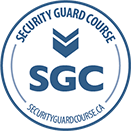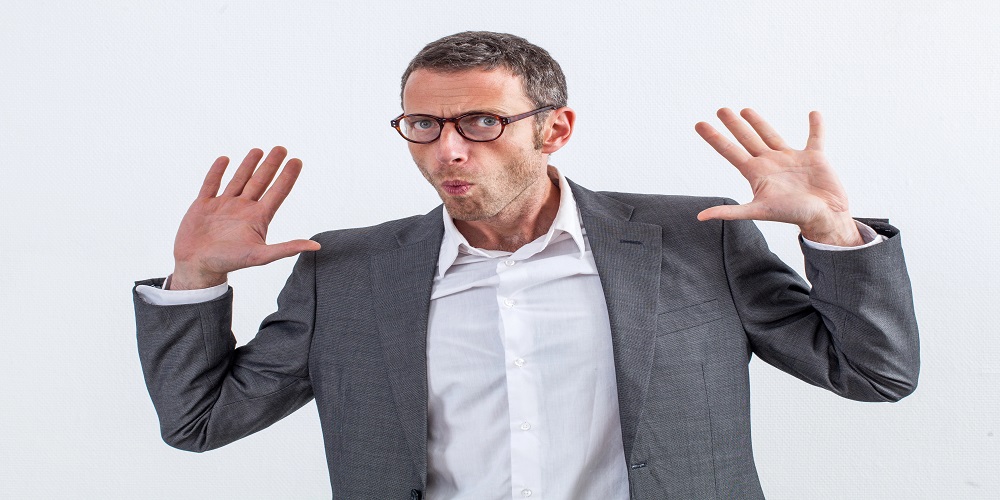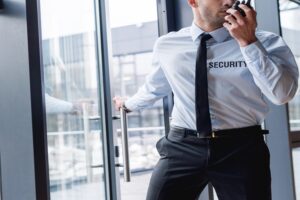What is Kinesics and Why Does it Matter?
Kinesics is the study of body language and how it influences the perceptions and behavior of others. This includes facial expressions, gestures, posture, and movements. For security guards, a strong understanding of kinesics is crucial for effective communication. The way a security guard stands, moves, and gestures can determine whether a situation is calmed or escalated.
Security guards often interact with people in stressful or confrontational situations. Their communication—both verbal and non-verbal—directly affects how others respond. A guard who projects authority while maintaining a calm demeanor can encourage cooperation and de-escalate conflicts. Even when people may not want to listen, they will notice the way a guard presents and carries themselves.
How Kinesics Relates to the Security Role
As a security guard, you can use body language to influence how others respond to you. Effective kinesics can:
- Deter potential threats by projecting confidence and authority.
- Encourage cooperation by making people feel safe and respected.
- De-escalate conflicts by reducing tension and promoting calm.
- Prevent misunderstandings that could lead to confrontation.
Conversely, negative or aggressive body language can escalate situations. If people feel nervous or intimidated, they may become defensive, uncooperative, or even aggressive.
How Negative Kinesics Can Cause Escalation
When people feel threatened, they instinctively react with fight, flight, or freeze responses. A security guard who is unaware of their body language can unintentionally trigger these reactions.
Example:
A security guard notices a customer acting suspiciously in a high-theft area of a store. The guard quickly approaches, stands too close, crosses their arms, and glares at the customer.
How might this make the customer feel?
- Threatened: Their personal space is invaded, and the guard’s posture appears imposing.
- Defensive: They feel judged or accused of wrongdoing.
- Angry or Confrontational: The perceived aggression may trigger a negative response.
Even if unintended, the guard’s kinesics have worsened the situation, making the customer less likely to cooperate.
Common Negative Kinesics to Avoid
- Standing too close: This can trigger a fight, flight, or freeze response.
- Crossing arms: Appears closed off, disinterested, or confrontational.
- Clenching fists: Signals aggression or readiness for a fight.
- Pointing fingers: Can be seen as accusatory.
- Fast or jerky movements: May startle people, leading to defensive reactions.
How Positive Kinesics Can De-Escalate a Situation
Using the right body language helps keep people calm by making them feel safe and respected, increasing their willingness to cooperate.
Example:
A security guard approaches a distressed customer. Instead of using aggressive body language, the guard:
- Approaches calmly with an open (neutral) stance.
- Maintains a respectful distance (4-6 feet).
- Keeps hands visible and open, avoiding clenched fists.
- Uses a non-threatening tone of voice.
How does this affect the customer?
- Respected: The guard does not seem aggressive or confrontational.
- Safe: The situation does not feel immediately threatening.
- More willing to cooperate: Without feeling defensive, the customer is more likely to engage positively.
Positive Kinesics to Use
- Relaxed posture: Projects confidence without arrogance.
- Open hands: Signals good intentions and willingness to listen.
- Slow, smooth movements: Demonstrates calmness and avoids startling others.
- Neutral facial expressions (and appropriate smiles): Shows care, concern, and composure.
- Steady eye contact: Conveys presence and engagement without intimidation.
Beyond Kinesics: Other Verbal and Non-Verbal Cues
While body language is crucial, other factors also influence behavior.
Proxemics (Use of Space)
- Maintain a safe distance (around 6 feet) to avoid making others feel threatened.
- Avoid standing directly in front of someone, which can feel like blocking an escape route.
- Positioning yourself at an angle can reduce tension and improve communication.
Paraverbals (Tone, Volume, and Cadence)
- Use a calm tone, avoiding frustration or anger.
- Adjust your volume to suit the environment (louder in noisy areas, softer in close quarters).
- Speak at a steady pace to ensure clarity and engagement.
Mirroring (Subtle Imitation)
- Naturally mirroring someone’s body language can help build rapport.
- If someone is tense, first mirroring their stance and then relaxing your posture can encourage them to do the same.
Dos and Don’ts of Using Kinesics in Security Work
✅ Do:
- Maintain a neutral, confident posture (Interview Stance).
- Keep hands visible, open, and above the waist.
- Move slowly and deliberately, especially in tense situations.
- Maintain steady, non-threatening eye contact.
- Respect personal space.
- Speak calmly and confidently.
❌ Don’t:
- Invade personal space.
- Cross your arms.
- Clench your fists.
- Make sudden or jerky movements.
- Point fingers at people.
- Stare or glare aggressively.
- Raise your voice unnecessarily.
Conclusion
As a security guard, how you are perceived is just as important as what you say. By using positive kinesics and avoiding negative ones, you can influence behavior, gain cooperation, and prevent conflicts from escalating.
Though sometimes called a “soft skill,” mastering body language is a vital communication tool that enhances safety for both you and those around you. Understanding kinesics and applying it effectively can help you navigate even the most challenging situations.
For more in-depth training on kinesics and other critical security skills, visit SecurityGuardCourse.ca and explore our courses.




